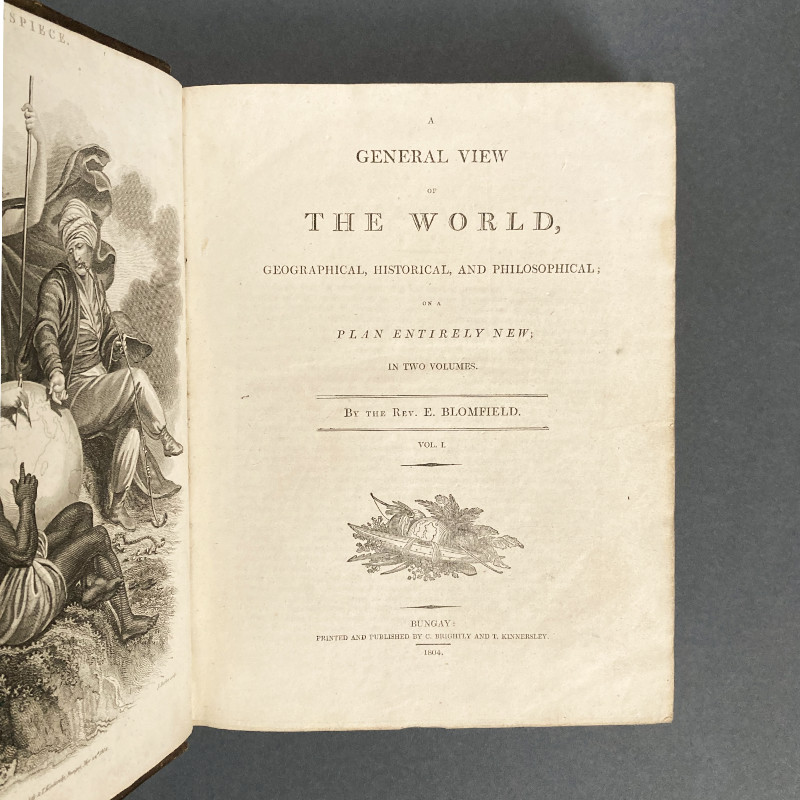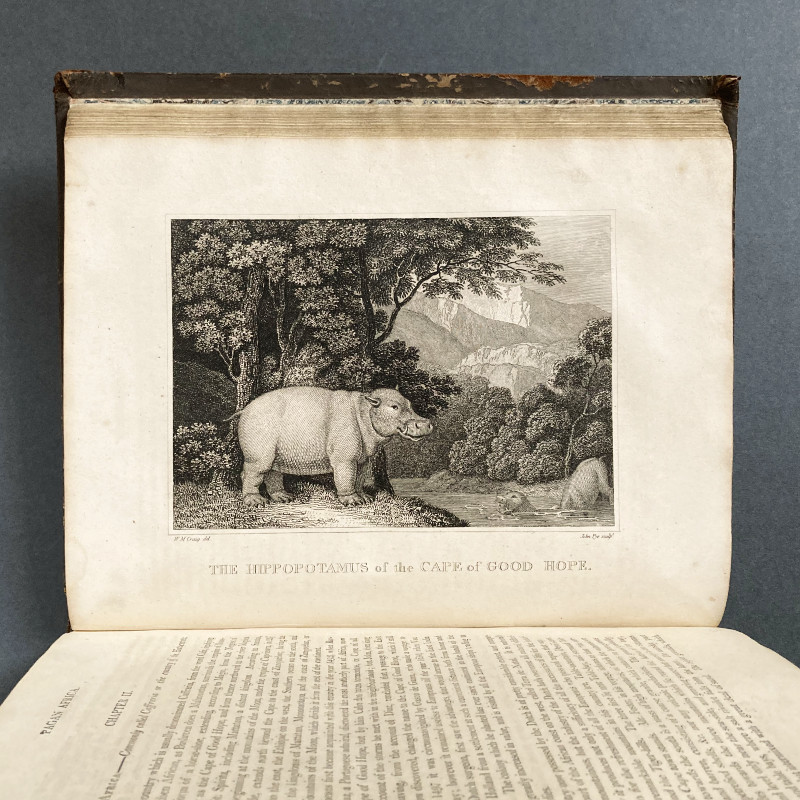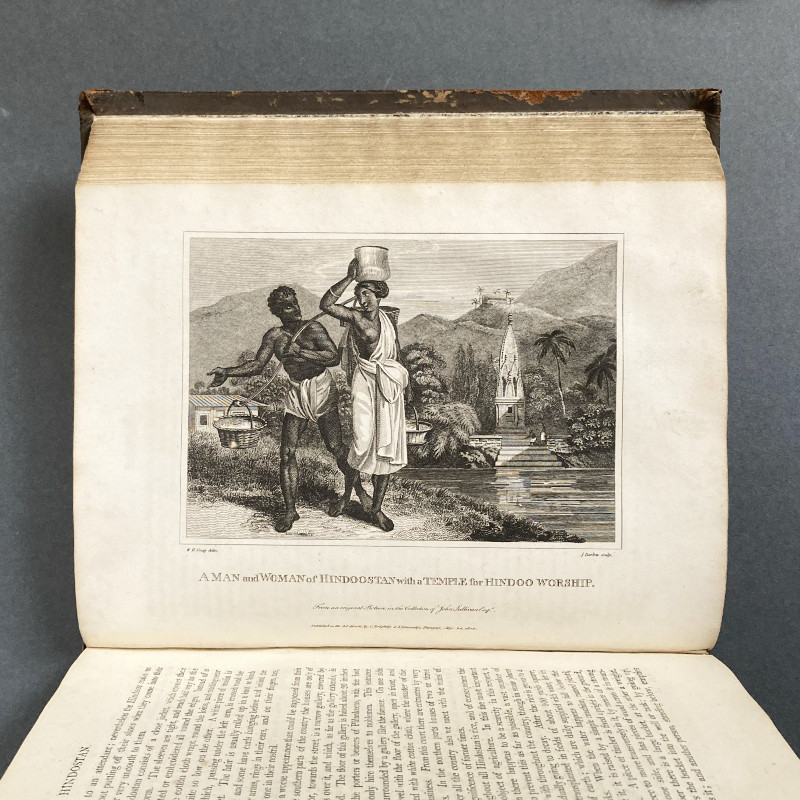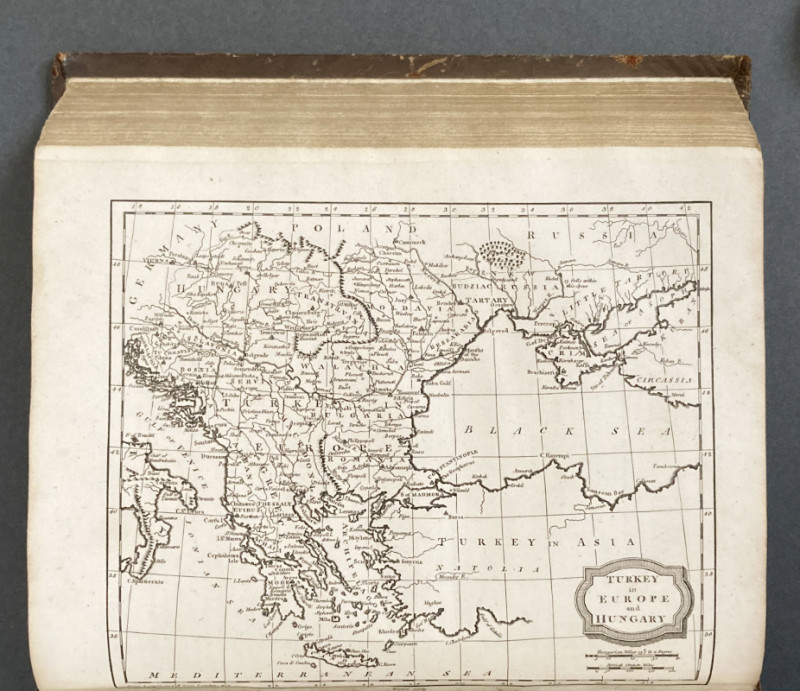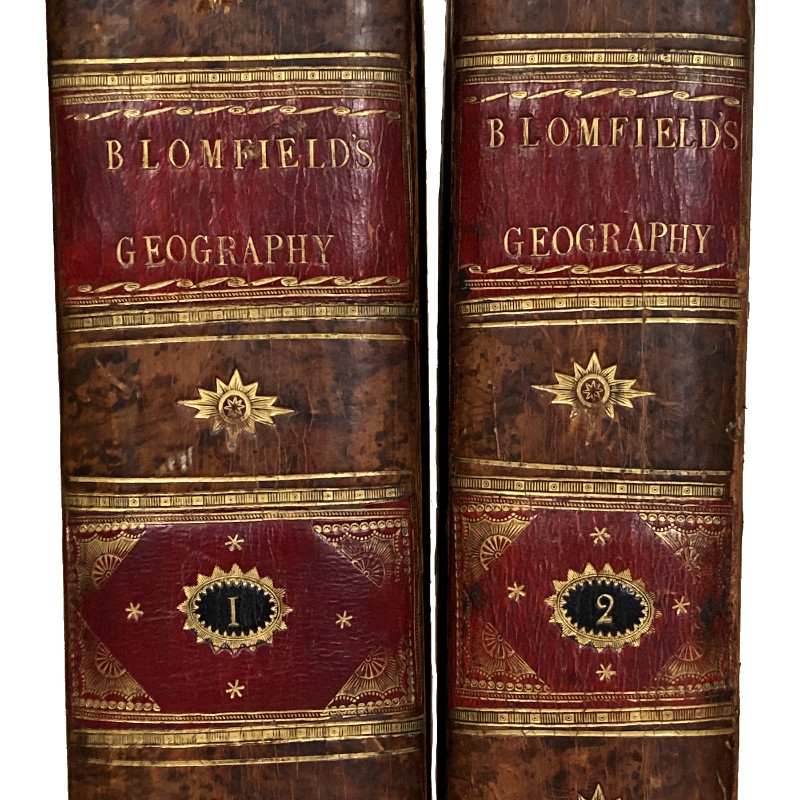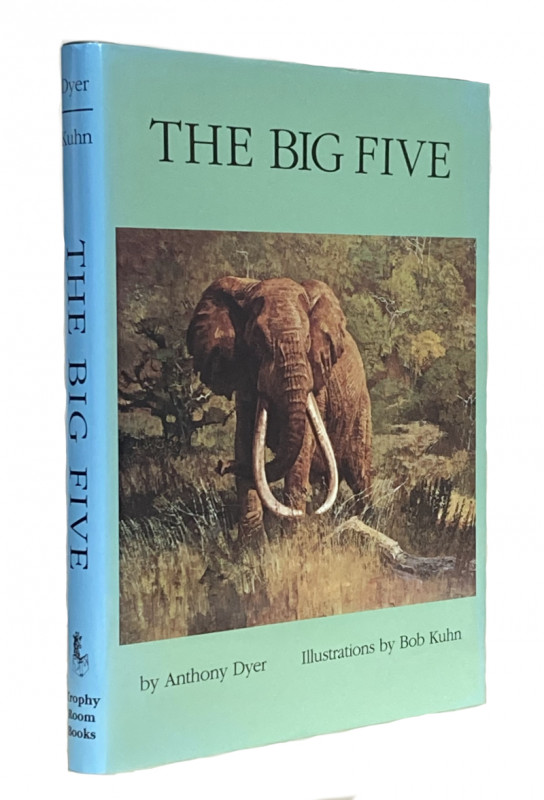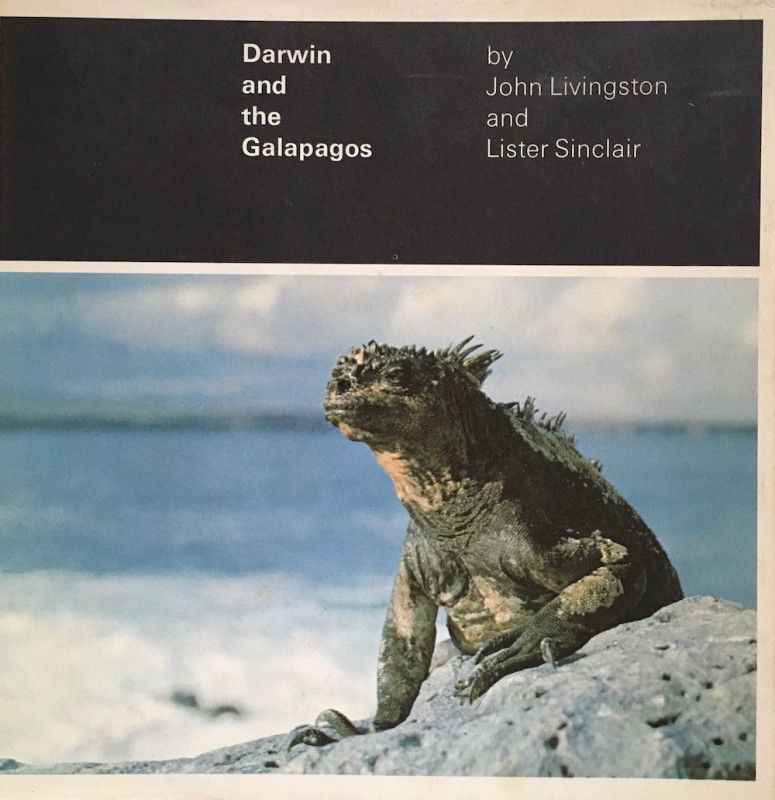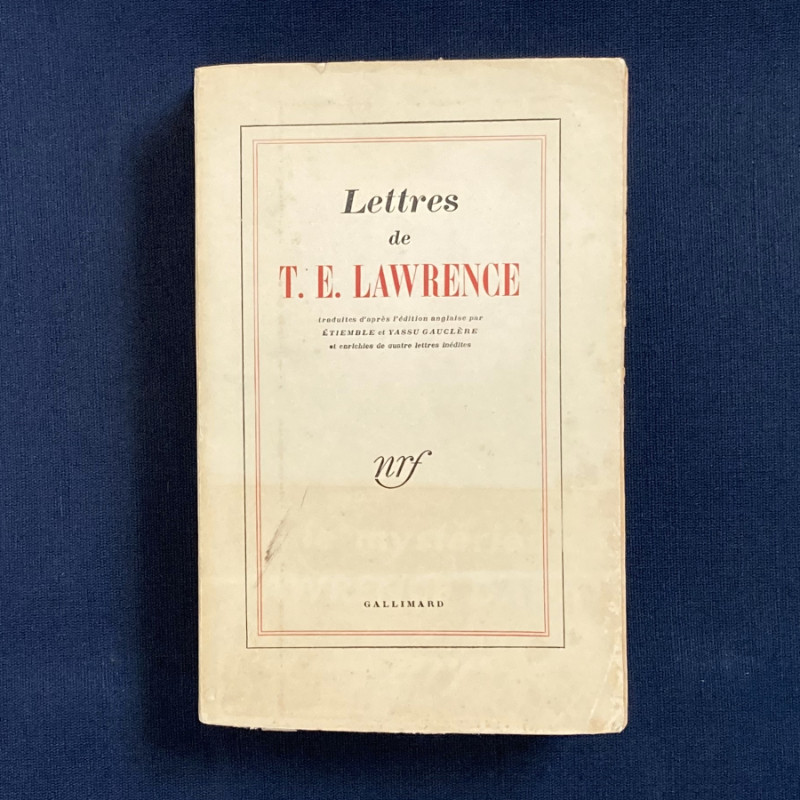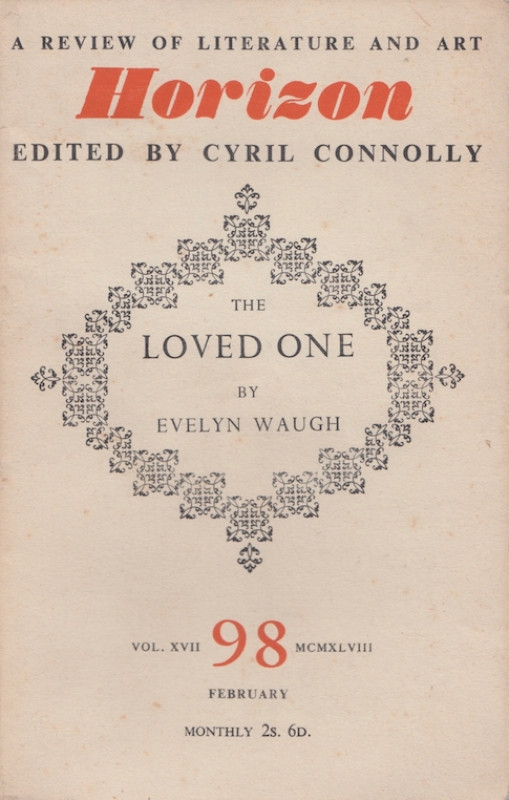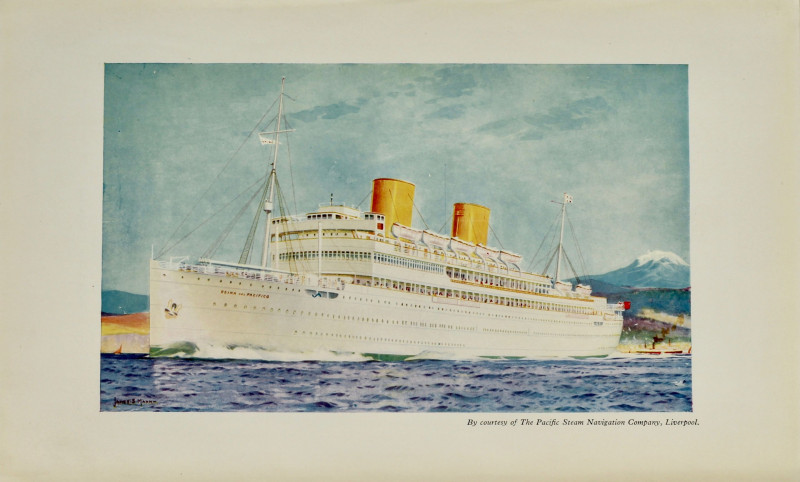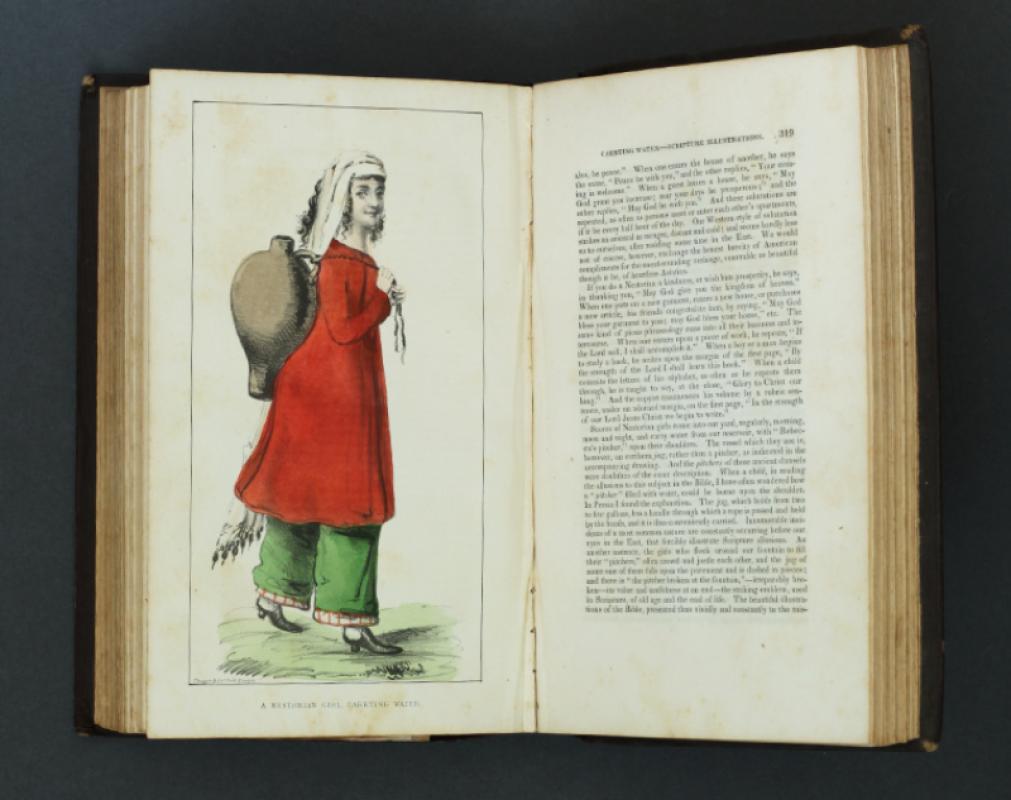A General View of the World, Geographical, Historical, and Philosophical; on a Plan Entirely New
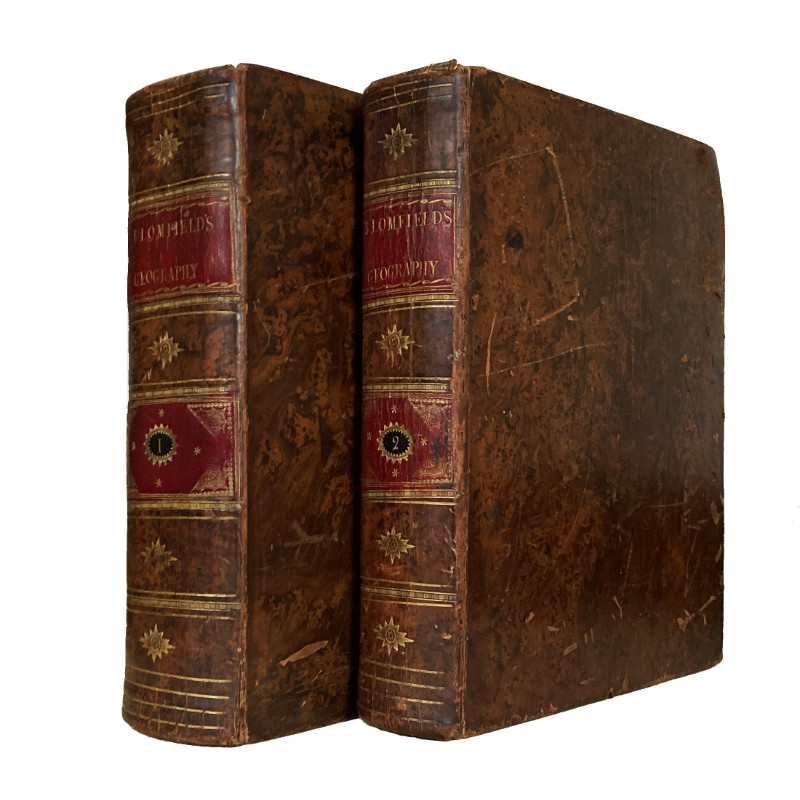
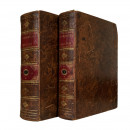

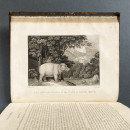
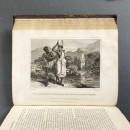
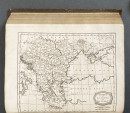
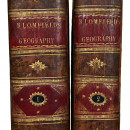
Book Description
BLOMFIELD’S COMPREHENSIVE CONSPECTUS OF THE WORLD, ILLUSTRATED WITH ENGRAVINGS AFTER WILLIAM MARSHALL CRAIG, IN A CONTEMPORARY BINDING
2 volumes, quarto in 2s and 4s (262 x 206mm), pp. I: v (title, verso blank, preface), [1 (blank)], [1]-827 (‘View of the World’ I-III), [1 (blank)], [3]-254 (‘Introduction. Preparatory View of the World’); II: [2 (title, verso blank)], [1]-695 (‘View of the World’ IV-XV), [1 (blank)], [28 (‘General Index’ and ‘Explanatory Index’)]. Engraved allegorical frontispiece by J. Barlow after William Marshall Craig in vol. I, 36 engraved plates by J. Barlow, T. Wallis, John Pye, and Rolfe after Craig, 21 engraved maps, 4 folding (including ‘Map of the World’ bound as a frontispiece to vol. II), and one folding letterpress table. Wood-engraved title-vignettes. (Some light browning, marking or spotting, marginal damp-marking affecting a few ll. and plates, some folding plates creased, some short tears, mainly marginal, occasionally causing small losses.) Contemporary British tree calf, spines gilt in compartments, gilt red morocco lettering-pieces in two, the lower with a contrasting green morocco inlay with the volume number in gilt, other compartments with central star tool in gilt, board-edges roll-tooled in gilt, marbled endpapers. (Some scuffing and scratching causing small superficial losses, corners bumped, some superficial cracking on joints, front flyleaf removed from vol. II.) A very good copy in a contemporary British binding.
Provenance: early marginal pencil note on II, p. 437 – Thomas Kempster, Greenfield House, Llandysilio (1837-1893; ‘Kempster’ in pencil on verso of front free endpapers in a 20th-century hand; by descent to his daughter-in-law:) – Winifred Wilde (d. 1973; by descent to her great-nephew, the present owner).
2 volumes, quarto in 2s and 4s (262 x 206mm), pp. I: v (title, verso blank, preface), [1 (blank)], [1]-827 (‘View of the World’ I-III), [1 (blank)], [3]-254 (‘Introduction. Preparatory View of the World’); II: [2 (title, verso blank)], [1]-695 (‘View of the World’ IV-XV), [1 (blank)], [28 (‘General Index’ and ‘Explanatory Index’)]. Engraved allegorical frontispiece by J. Barlow after William Marshall Craig in vol. I, 36 engraved plates by J. Barlow, T. Wallis, John Pye, and Rolfe after Craig, 21 engraved maps, 4 folding (including ‘Map of the World’ bound as a frontispiece to vol. II), and one folding letterpress table. Wood-engraved title-vignettes. (Some light browning, marking or spotting, marginal damp-marking affecting a few ll. and plates, some folding plates creased, some short tears, mainly marginal, occasionally causing small losses.) Contemporary British tree calf, spines gilt in compartments, gilt red morocco lettering-pieces in two, the lower with a contrasting green morocco inlay with the volume number in gilt, other compartments with central star tool in gilt, board-edges roll-tooled in gilt, marbled endpapers. (Some scuffing and scratching causing small superficial losses, corners bumped, some superficial cracking on joints, front flyleaf removed from vol. II.) A very good copy in a contemporary British binding.
Provenance: early marginal pencil note on II, p. 437 – Thomas Kempster, Greenfield House, Llandysilio (1837-1893; ‘Kempster’ in pencil on verso of front free endpapers in a 20th-century hand; by descent to his daughter-in-law:) – Winifred Wilde (d. 1973; by descent to her great-nephew, the present owner).
Dealer Notes
First edition. The Independent minister and writer Blomfield (1778-1818) was born into a poor Norfolk family, which moved to Norwich in 1783. As a boy Blomfield ‘read widely, but the book that determined his lifelong studies was Anna Letitia Barbauld’s Evenings at Home (1792-6), which quickened his interest in the phenomena of nature. At about fifteen he became imbued with strong religious convictions and was placed under the care of a nonconformist minister, the Revd S. Newton of Norwich. Under his capable mastership he rapidly acquired Latin, Greek, and Hebrew. After combating old doubts, in 1796 he joined Newton’s church, and, resolving to become a minister, attended the Independent Homerton Academy’ (ODNB). Following a year-long illness, Blomfield joined the congregation at the market town of Wymondham in South Norfolk and on 20 October 1800 he married Mary Fursnell. Shortly after his marriage, Blomfield delivered a course of lectures on history at Wymondham, and, as his family grew (it would eventually number eight children), ‘he eked out a slender income by hack work for Brightley, a printer at Bungay, and subsequently went into partnership with him’ (op. cit.). Blomfield’s first publication with Brightley and Kinnersley was A New Family Bible: Containing the Old and New Testaments, with Notes, Illustrations, and Practical Improvements Selected from the Exposition of Matthew Henry, by E. Blomfield; Embellished with Fifty Beautiful Engravings, which was published in two quarto volumes in 1803-1805.
A New Family Bible was followed by A General View of the World, a comprehensive and wide-ranging two-volume account of the continents and countries of the world, which drew upon many of the most notable works of travel and exploration of the era, including Joseph Addison’s Remarks on Several Parts of Italy, &c. in the Years 1701, 1702, 1703, James Bruce’s description of his travels in Abyssinia, William Coxe’s Travels into Poland, Russia, Sweden, and Denmark, Jean-Baptiste du Halde’s account of his travels in China and Tibet, Sir William Jones’s The History of the Life of Nader Shah, King of Persia, works about Sir George Staunton’s embassy to China, Michael Symes’s An Account of an Embassy to the Kingdom of Ava in the Year 1795, and Constantin-François Volney’s narrative of his travels in Egypt and Syria. The first part of A General View of the World is ‘Introduction. Preparatory View of the World’ and comprises eight chapters on a wide range of scientific subjects, titled ‘Astronomy’, ‘Mathematical Geography’, ‘Meteorology’, ‘Geology’, ‘Mineralogy’, ‘Œconomy of Vegetation’, ‘Animated Nature’, and ‘On Man’. This is followed by the body of the work (‘View of the World’), which is divided into 15 books. The first book provides an overview of the continents (Europe, Asia, Africa, and America) and is followed by ‘The British Empire’ (Book II), which describes the geography of the countries of the British Isles and provides a history of Britain from the earliest times to Blomfield’s own time. Book III, which concludes the first volume, is dedicated to ‘Northern Europe’ and gives detailed accounts of the countries from the Arctic Circle to Germany. Volume II comprises books IV to XIV, which describe ‘The Southwest of Europe’, ‘The Russian Empire’, ‘Eastern Asia’, ‘The South of Asia’, ‘The Ottoman Empire’, ‘Christian Africa’, ‘Mahometan Africa’, ‘Pagan Africa’, ‘South America’, ‘West Indies’, ‘North America’, and ‘The Islands in the Pacific Ocean’.
The designs for the plates which illustrate A General View of the World were commissioned from the artist W.M. Craig (1763 or 1764-1829), who was probably a nephew of the Edinburgh architect James Craig. After working as an artist in Manchester, and exhibiting in Manchester and Liverpool, W.M. Craig moved to London in c. 1791. In London he established himself as ‘a miniature and portrait painter, varying this with occasional rustic figures and landscapes in watercolours [...], and domestic scenes’ (ODNB), and was Drawing Master to Princess Charlotte of Wales, Miniature Painter to the Duke and Duchess of York, and Painter in Watercolours to Queen Charlotte. Craig’s designs were engraved by a group of four engravers, including ‘J. Barlow’ (presumably the John Barlow (1759-c. 1810) who trained at the Royal Academy schools before working in London), and John Pye. It seems likely that the latter was the English engraver who was born in 1782, began working for James Heath in 1801, who produced a great many book illustrations as well as individual prints. In 1805 Pye embarked upon a lengthy collaborative partnership with J.M.W. Turner and he rose to prominence both as an extremely skilled engraver and as an effective advocate for engravers and printmakers. Although his criticism of the Royal Academy may have been an obstacle to official recognition in Britain, Pye was awarded a gold medal by the French government in 1846 and in 1862 he was elected a Corresponding Member of the Académie des Beaux-Arts of Paris, and his death in 1874 ‘deprived engravers of an individual who had been their best spokesman’ and had encouraged ‘projects which sought to make the relationship between engravers and their public closer and more aesthetically improving’ (ODNB).
This set of A General View of the World is a contemporary British binding, which was probably executed by a provincial workshop (in the first volume, the binder has misbound ‘Introduction. Preparatory View of the World’ after ‘View of the World’ I-III). It is believed this set was inherited by Thomas Kempster (1837-1893) from his father, suggesting that the binding may have been produced by a Welsh bindery, and that it was executed at or shortly after the publication of the volumes. The set has remained in the possession of Thomas Kempster’s descendants to the present day and has therefore not been offered on the market for more than a century.
Mendelssohn I, p. 140; Phillips, Maps of America, p. 805 (‘South America, from the Best Authorities’); Sabin, Bibliotheca Americana, 5973.
A New Family Bible was followed by A General View of the World, a comprehensive and wide-ranging two-volume account of the continents and countries of the world, which drew upon many of the most notable works of travel and exploration of the era, including Joseph Addison’s Remarks on Several Parts of Italy, &c. in the Years 1701, 1702, 1703, James Bruce’s description of his travels in Abyssinia, William Coxe’s Travels into Poland, Russia, Sweden, and Denmark, Jean-Baptiste du Halde’s account of his travels in China and Tibet, Sir William Jones’s The History of the Life of Nader Shah, King of Persia, works about Sir George Staunton’s embassy to China, Michael Symes’s An Account of an Embassy to the Kingdom of Ava in the Year 1795, and Constantin-François Volney’s narrative of his travels in Egypt and Syria. The first part of A General View of the World is ‘Introduction. Preparatory View of the World’ and comprises eight chapters on a wide range of scientific subjects, titled ‘Astronomy’, ‘Mathematical Geography’, ‘Meteorology’, ‘Geology’, ‘Mineralogy’, ‘Œconomy of Vegetation’, ‘Animated Nature’, and ‘On Man’. This is followed by the body of the work (‘View of the World’), which is divided into 15 books. The first book provides an overview of the continents (Europe, Asia, Africa, and America) and is followed by ‘The British Empire’ (Book II), which describes the geography of the countries of the British Isles and provides a history of Britain from the earliest times to Blomfield’s own time. Book III, which concludes the first volume, is dedicated to ‘Northern Europe’ and gives detailed accounts of the countries from the Arctic Circle to Germany. Volume II comprises books IV to XIV, which describe ‘The Southwest of Europe’, ‘The Russian Empire’, ‘Eastern Asia’, ‘The South of Asia’, ‘The Ottoman Empire’, ‘Christian Africa’, ‘Mahometan Africa’, ‘Pagan Africa’, ‘South America’, ‘West Indies’, ‘North America’, and ‘The Islands in the Pacific Ocean’.
The designs for the plates which illustrate A General View of the World were commissioned from the artist W.M. Craig (1763 or 1764-1829), who was probably a nephew of the Edinburgh architect James Craig. After working as an artist in Manchester, and exhibiting in Manchester and Liverpool, W.M. Craig moved to London in c. 1791. In London he established himself as ‘a miniature and portrait painter, varying this with occasional rustic figures and landscapes in watercolours [...], and domestic scenes’ (ODNB), and was Drawing Master to Princess Charlotte of Wales, Miniature Painter to the Duke and Duchess of York, and Painter in Watercolours to Queen Charlotte. Craig’s designs were engraved by a group of four engravers, including ‘J. Barlow’ (presumably the John Barlow (1759-c. 1810) who trained at the Royal Academy schools before working in London), and John Pye. It seems likely that the latter was the English engraver who was born in 1782, began working for James Heath in 1801, who produced a great many book illustrations as well as individual prints. In 1805 Pye embarked upon a lengthy collaborative partnership with J.M.W. Turner and he rose to prominence both as an extremely skilled engraver and as an effective advocate for engravers and printmakers. Although his criticism of the Royal Academy may have been an obstacle to official recognition in Britain, Pye was awarded a gold medal by the French government in 1846 and in 1862 he was elected a Corresponding Member of the Académie des Beaux-Arts of Paris, and his death in 1874 ‘deprived engravers of an individual who had been their best spokesman’ and had encouraged ‘projects which sought to make the relationship between engravers and their public closer and more aesthetically improving’ (ODNB).
This set of A General View of the World is a contemporary British binding, which was probably executed by a provincial workshop (in the first volume, the binder has misbound ‘Introduction. Preparatory View of the World’ after ‘View of the World’ I-III). It is believed this set was inherited by Thomas Kempster (1837-1893) from his father, suggesting that the binding may have been produced by a Welsh bindery, and that it was executed at or shortly after the publication of the volumes. The set has remained in the possession of Thomas Kempster’s descendants to the present day and has therefore not been offered on the market for more than a century.
Mendelssohn I, p. 140; Phillips, Maps of America, p. 805 (‘South America, from the Best Authorities’); Sabin, Bibliotheca Americana, 5973.
Author
BLOMFIELD, Ezekiel
Date
1804-1807
Publisher
Bungay: ‘printed and published by C. Brightly and T. Kinnersley’
Friends of the PBFA
For £10 get free entry to our fairs, updates from the PBFA and more.
Please email info@pbfa.org for more information
